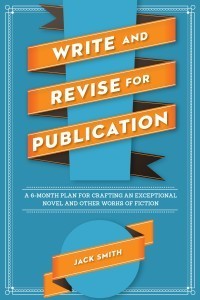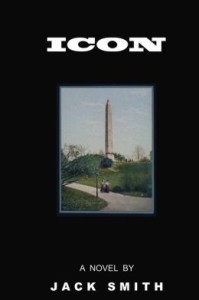10 Common Fiction Problems and How to Fix Them
Guest Post by Jack Smith
When you write and revise your fiction, you deal with a host of problems. With some novels, it’s hard to decide on the right point of view. With others, it’s a struggle to work out the plot. Sometimes it’s a matter of getting the language down just right. Of course it’s one thing to spot a problem, another to fix it. Consider the following ten rather typical problems most fiction writers face—and some possible fixes.
A dull character
Perhaps in the abstract one can sympathize or empathize with your character’s ambitions, needs, desires, plight, etc., but when it comes down to the writing itself, the character is flat-out dull, vacuous—bearing nothing distinctly human. If this is the case, you need to individualize your character by including:
something interesting about this character’s physical appearance
an interesting, suggestive name
some personality quirks or oddities
some contradictions or inner conflicts
some unique, defining traits
If you do these things, or some of them, your character will come alive on the page and won’t be merely a textbook case.
Lack of character motivation
A story or novel might have sufficient conflict, but this conflict might lack clear anchoring (or context) in character. What makes this conflict so important to this particular character? Why does this character react the way he or she does? To make sure conflict comes out of character, you need to consider the following:
The character’s particular personality and temperament
The character’s take on self and others
The character’s past (if something in the past drives the character in the present)
The character’s desires and ambitions
Motivations that follow from the above
Keep in mind too that ordinary conflicts can become important when they reveal deeper roots in your character. You don’t have to go for life-death struggles.
Flat dialogue
If the dialogue sounds pretty ho-hum to you, you can bet it will to readers. You can improve flat dialogue by trying out the following:
Using fragments—at least when characters are responding to each other
Using clipped, staccato sentences
Using ellipsis for pauses
Using italics or capitalization—sparingly, judiciously, though
Having characters interrupt each other
Having characters abruptly change the subject
Having characters dodge questions
Including provocative ideas (accusations, threats, statements of remorse, etc.)
Avoiding too-obvious use of dialogue as expository information (certainly characters can function as expository devices, but be subtle; if you’re not, the dialogue will get over-explanatory, and boring, in a hurry)
Making sure character personality is revealed in speech and gesture
A half-baked plot
The conflict might be there, but the character arc isn’t fully developed. What needs to be added? Here’s how to decide:
Sum up your plot in one sentence
Develop this one-sentence summary of plot into a paragraph
From this one paragraph summary, list key events and the causal relationship between each event in the story
For a novel, write succinct chapter summaries
Identify the missing links in the plot—what has to be included to complete the character arc?
Fill in where needed, being sure not to force things
A loose structure
When the story seems scattered, with lack of clear focus, consider doing the following:
Decide on the overall character arc
Prune out extraneous material that takes the reader off course—some of this material might be telescoped
Watch out for flashbacks that run too long, especially in a short story
Look for ways to include foreshadowing at strategic places
Look for ways to include echoes (of earlier developments) at strategic places
Authorial intrusion
When the third person—especially the omniscient narrator—“tells” too much and/or doesn’t leave the story in the hands of the characters, the story or novel will lack the feel of real life. Avoid the following:
Manipulation of character action. Be sure the action is properly motivated by character.
Manipulation of plot. Be sure you don’t make everything come out a certain way. Let your character reach his or level like water does. Things may not end up quite like you imagined. Be open to some surprises.
Authorial thought and speech. It’s okay to have in mind what a character is likely to think and say, but if it seems like these are your authorial thoughts, and not fitting to your character, again let loose the reins and see how the character changes.
Think of authorial intrusion as the puppeteer author standing outside the characters, pulling their strings, making them perform and telling about them instead of being inside the characters, revealing their innermost lives.
A story or novel opening that lacks flair
The first paragraph of your story or novel needs to pull the reader in. If it doesn’t, you might try a different approach. Here are some things to try out:
Try all four fictional modes—exposition, description, narrative summary, and scene—and choose the opening which grabs your reader’s attention the most.
Try cutting the first few paragraphs, or even a page or more, and see if the work gets off to a more interesting start.
Start with conflict, suspense, something that provokes thought.
A dull ending
A dull ending can result from at least two problems—no surprises and lack of flair.
No surprises: Leave some questions for your reader. Don’t introduce entirely new characters and conflicts, but leave some room for interpretation in terms of character, plot, and ideas, which you’ve been developing all along.
Lack of flair: Choose the narrative mode that gives the most punch to the writing. Study short story endings and novel endings. Remember, this is the final impression you leave with your reader. It needs to stir the reader’s emotions and thought.
A clunky prose style
If the language of your story or novel sounds amateurish, it can be fixed. To fix it, make sure the language itself has some surprises:
Work in some twists and turns—surprises at the sentence level.
Work in some interesting metaphors, similes, or analogies, avoiding clichés. Let your imagination run. Don’t force it, but be open to clever figurative comparisons.
Choose the word with the most punch. Don’t use a thesaurus, unless you check usage in a dictionary.
Lack of editing
This comes down to typos, spelling errors, mechanics gone awry like faulty punctuation, sentence logic problems, and poor word choice. Read your short story or novel over carefully. Get someone else to read it over. Check a handbook.
A Final word or two
The above just scratches the surface when it comes to dealing with the many problems one faces in writing good fiction. And sometimes it’s really hard to spot exactly what the problem is. If several readers are finding a common problem, then that tells you something. And then it’s a matter of fixing things to your own satisfaction. Don’t rely too much on others; it’s got to work for you.
Jack Smith is author of the novel Hog to Hog, which won the George Garrett Fiction Prize (Texas Review Press. 2008), and is also the author of Write and Revise for Publication: A 6-Month Plan for Crafting an Exceptional Novel and Other Works of Fiction, published earlier this year by Writer’s Digest. His novel ICON was published in June 2014 by Serving House Book
Prize (Texas Review Press. 2008), and is also the author of Write and Revise for Publication: A 6-Month Plan for Crafting an Exceptional Novel and Other Works of Fiction, published earlier this year by Writer’s Digest. His novel ICON was published in June 2014 by Serving House Book
 Over the years, Smith’s short stories have appeared in North American Review, Night Train, Texas Review, and Southern Review, to name a few. He has also written some 20 articles for Novel & Short Story Writer’s Market, as well as a dozen or so pieces for The Writer.
He has published reviews in numerous literary journals, including Ploughshares, Georgia Review, Missouri Review, Prairie Schooner, American Review, Mid-American Review, and the Iowa Review.
Over the years, Smith’s short stories have appeared in North American Review, Night Train, Texas Review, and Southern Review, to name a few. He has also written some 20 articles for Novel & Short Story Writer’s Market, as well as a dozen or so pieces for The Writer.
He has published reviews in numerous literary journals, including Ploughshares, Georgia Review, Missouri Review, Prairie Schooner, American Review, Mid-American Review, and the Iowa Review.
The post 10 Common Fiction Problems and How to Fix Them appeared first on Elizabeth Spann Craig.



